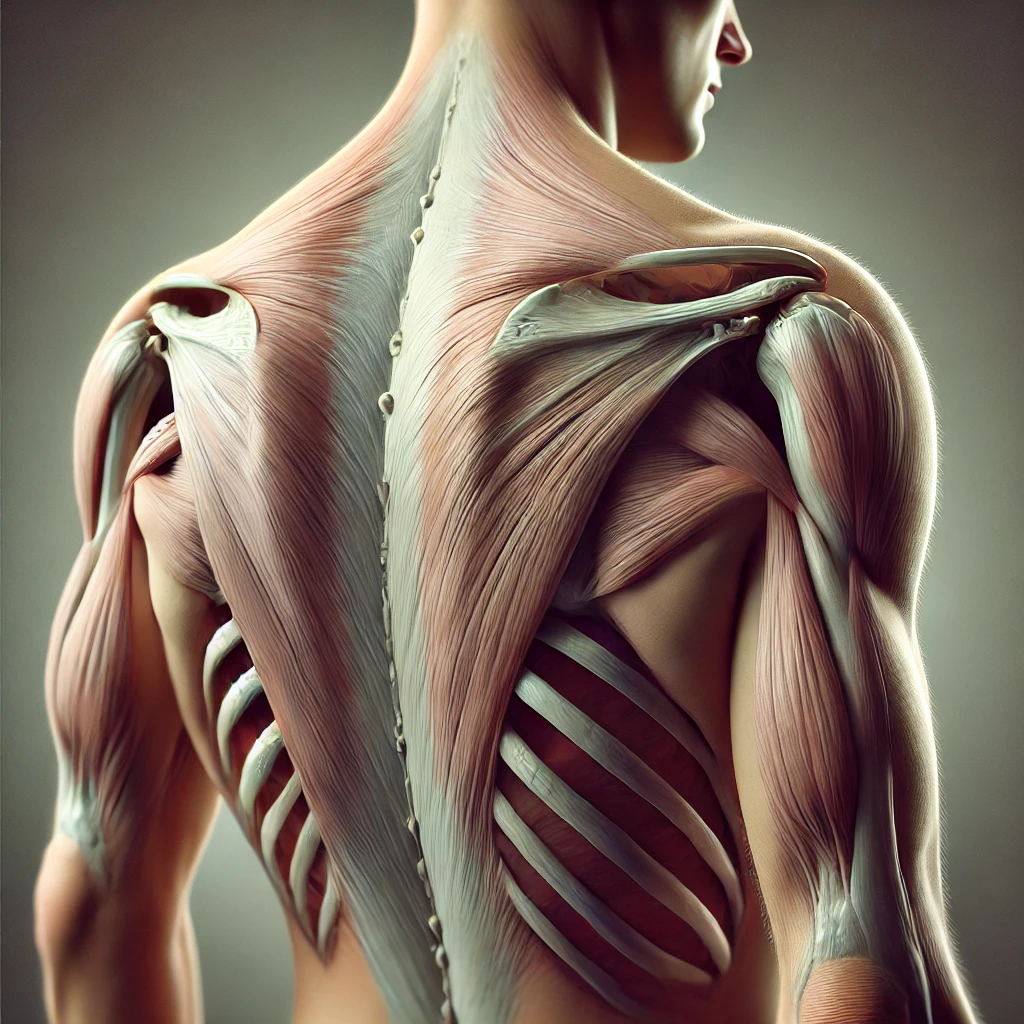
A winged scapula is a rare condition characterized by the protrusion of the shoulder blade (scapula) from the back, resembling a “wing.” It results from weakness or paralysis of the muscles that stabilize the scapula, most commonly the serratus anterior. This condition can significantly impact shoulder function, causing pain, weakness, and limitations in daily activities.
What Causes a Winged Scapula?
The primary cause of a winged scapula is damage to the nerves or muscles that stabilize the scapula. Common causes include:
- Nerve Damage: Injury to the long thoracic nerve, which innervates the serratus anterior muscle, is the most frequent cause. This can result from trauma, surgery, or repetitive strain.
- Muscle Weakness: Conditions like muscular dystrophy or prolonged immobilization can weaken stabilizing muscles.
- Trauma: Direct injuries to the shoulder or back.
- Other Factors: Viral illnesses, toxin exposure, or allergic reactions may also contribute to nerve damage and scapular winging123.
Symptoms of Winged Scapula
The symptoms vary depending on the severity and underlying cause but often include:
- Protrusion of one or both shoulder blades
- Pain in the shoulder or back
- Weakness in arm movements
- Limited range of motion, particularly in lifting or pushing
- Fatigue during physical activities
- Muscle spasms in severe cases124.
Diagnosis
Diagnosing a winged scapula involves:
- Physical Examination: The doctor assesses posture and shoulder blade movement during specific actions like pushing against resistance.
- Imaging Tests: X-rays or MRIs rule out other conditions.
- Electrodiagnostic Testing: Evaluates nerve function to identify potential nerve damage.
- Ultrasound: Helps examine muscle and nerve integrity12.
Treatment Options
Treatment depends on the severity and cause of the condition. It can be divided into non-surgical and surgical approaches.
Non-Surgical Treatment
Most cases respond well to conservative treatment methods:
- Physical Therapy:
- Focuses on strengthening stabilizing muscles such as the serratus anterior, trapezius, and rhomboids.
- Exercises like wall push-ups and scapular retractions are commonly prescribed.
- Pain Management:
- Anti-inflammatory medications help alleviate pain and swelling.
- Immobilization:
- Braces or slings may be used temporarily to stabilize the scapula.
- Lifestyle Modifications:
Surgical Treatment
Surgery is considered when conservative treatments fail after 12–24 months or if there is significant functional impairment:
- Dynamic Muscle Transfer:
- The pectoralis major tendon is transferred to support the scapula, particularly for long thoracic nerve palsy.
- Scapulothoracic Fusion:
- The scapula is fused to the rib cage for severe cases involving generalized muscle weakness.
- Nerve Transfers:
- Healthy nerves are grafted to restore function to affected muscles.
- Modified Eden-Lange Procedure:
Rehabilitation and Recovery
Recovery times vary depending on treatment type and severity:
- Non-surgical recovery may take months to years with consistent physical therapy.
- Post-surgery rehabilitation focuses on restoring strength and range of motion, often requiring several months of supervised therapy.
Prevention Tips
While not all cases are preventable, these strategies can reduce risk:
- Maintain good posture.
- Strengthen shoulder, neck, and back muscles through regular exercise.
- Avoid repetitive arm movements or carrying heavy loads on shoulders.
- Use ergonomic furniture and accessories to support proper alignment4.
Conclusion
A winged scapula is a debilitating condition that requires early diagnosis and tailored treatment plans for optimal recovery. Non-surgical methods are effective for most patients, but surgical intervention may be necessary for severe cases. Consulting a healthcare professional promptly ensures better outcomes and minimizes long-term complications.
Disclaimer: This content is for informational purposes only and is not intended to substitute professional medical advice, diagnosis, or treatment. Always seek the advice of your physician or qualified health provider with any questions you may have regarding a medical condition.
Citations:
- https://www.resurgens.com/shoulder/conditions/winged-scapula
- https://en.wikipedia.org/wiki/Winged_scapula
- https://www.anthonyromeomd.com/scapular-winging-orthopedic-surgeon-des-plaines-hinsdale-il/
- https://www.medicalnewstoday.com/articles/scapular-winging
- https://www.aetna.com/cpb/medical/data/800_899/0859.html
- https://www.healthline.com/health/scapular-winging
- https://www.physio-pedia.com/Scapular_Winging
- https://www.osmosis.org/learn/Winged_scapula
- https://my.clevelandclinic.org/health/diseases/winged-scapula
- https://radsource.us/scapular-winging/
- https://sportscare-armworks.com/wp-content/uploads/2021/02/3-3.jpg?sa=X&ved=2ahUKEwj-iberwrCMAxUh8MkDHfRwAOIQ_B16BAgFEAI
- https://sportscare-armworks.com/scapular-winging-and-how-to-fix-it/
- https://www.orthobullets.com/shoulder-and-elbow/3062/scapular-winging
- https://pmc.ncbi.nlm.nih.gov/articles/PMC2684151/
- https://insideclinicalmassage.com/understanding-winged-scapula-pain-and-the-benefits-of-myofascial-release-therapy/
